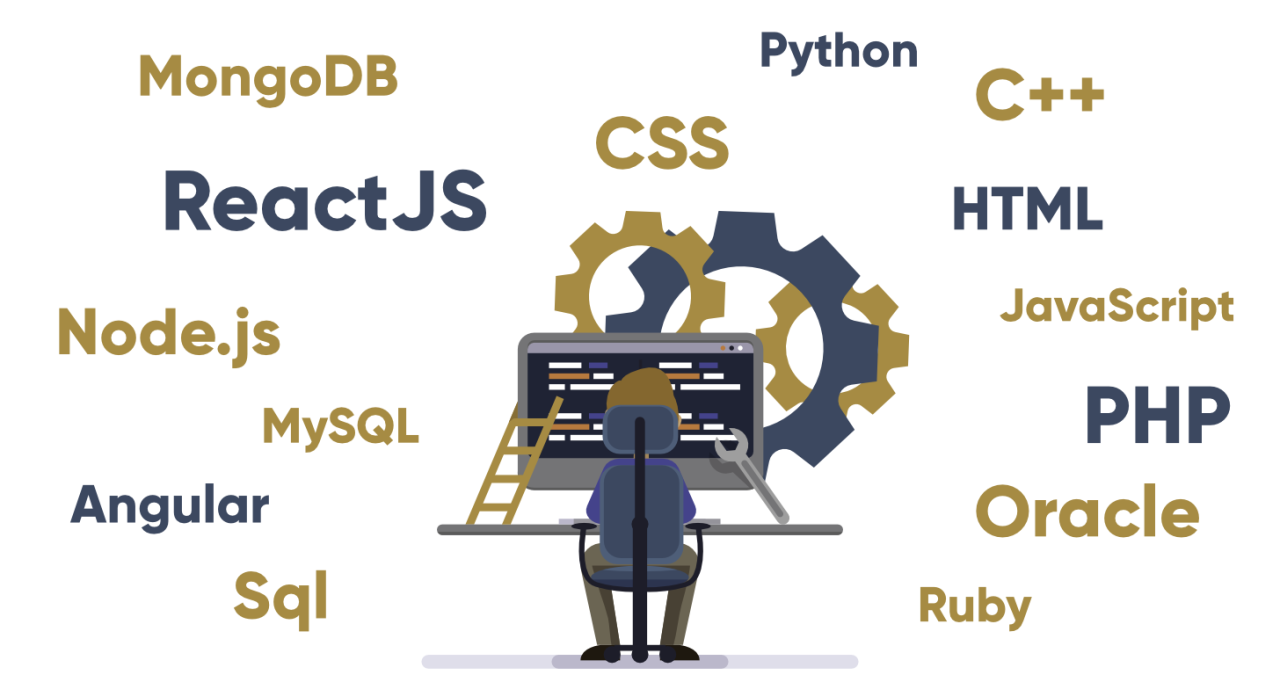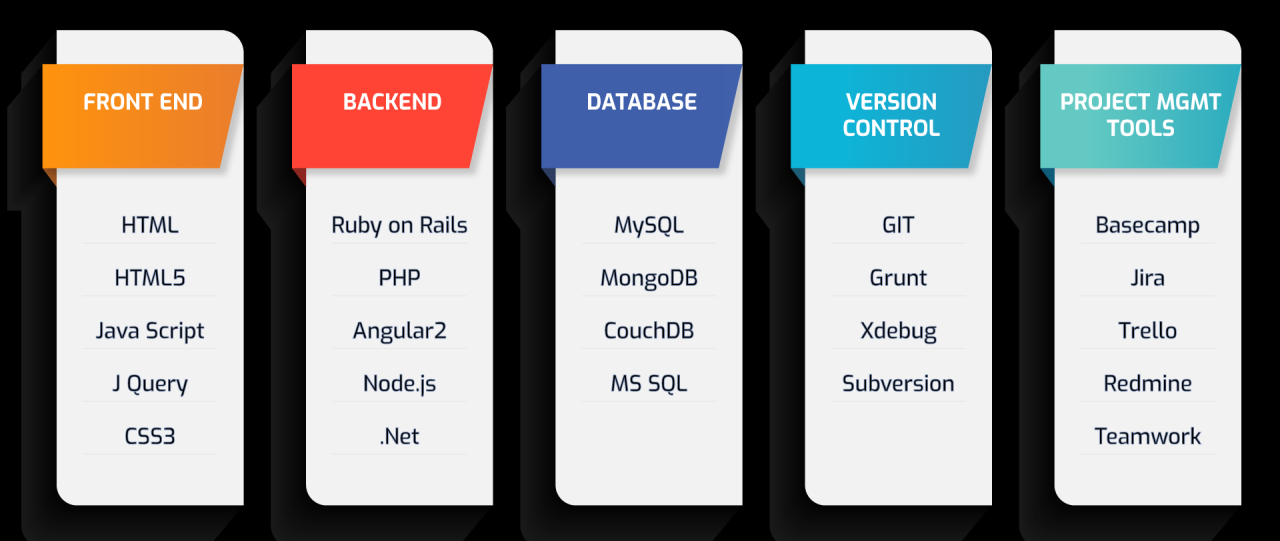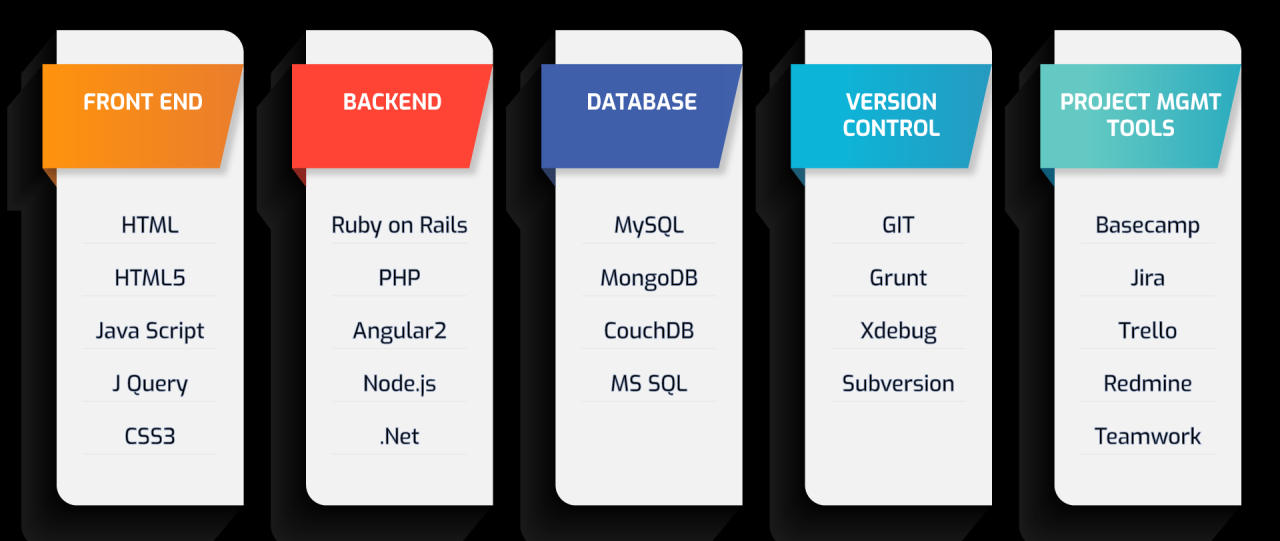Full stack developers are the superheroes of the tech world, wielding the power of both front-end and back-end development. They’re the masterminds behind seamless user experiences, capable of crafting everything from the visually stunning interface to the robust, data-driven engine humming beneath the surface. This guide dives into the world of full-stack development, exploring the skills, methodologies, and future prospects of this in-demand profession.
We’ll cover the essential technical skills, including popular programming languages and frameworks, and delve into the crucial soft skills needed for successful collaboration and project management. We’ll also examine how full-stack developers are transforming industries, from e-commerce and healthcare to fintech, and discuss the ever-evolving landscape shaped by emerging technologies like AI and blockchain.
Defining Full Stack Development
Full-stack development encompasses the entire process of building and deploying a web application, from the front-end (what users see and interact with) to the back-end (the server-side logic and database). It requires a broad skillset, bridging the gap between design and functionality.
Core Competencies of a Full-Stack Developer
A full-stack developer possesses a diverse range of skills, including proficiency in front-end technologies (HTML, CSS, JavaScript), back-end technologies (server-side languages, databases), and DevOps principles (deployment, server management). They understand the entire application architecture and can contribute effectively at all levels.
Technology Stacks for Full-Stack Developers
The specific technologies used can vary widely depending on the project’s requirements. However, common stacks often include combinations of JavaScript frameworks (React, Angular, Vue.js) for the front-end, Node.js, Python (with Django or Flask), or Java (with Spring) for the back-end, and databases like MySQL, PostgreSQL, or MongoDB.
Front-End vs. Back-End Development in the Full-Stack Context
Front-end development focuses on the user interface and user experience, ensuring a visually appealing and intuitive application. Back-end development handles the server-side logic, data management, and security. In a full-stack context, these roles are integrated, with the developer understanding and contributing to both.
Common Front-End and Back-End Technologies
| Front-End | Back-End | Database | DevOps |
|---|---|---|---|
| HTML | Node.js | MySQL | Docker |
| CSS | Python (Django/Flask) | PostgreSQL | Kubernetes |
| JavaScript | Java (Spring) | MongoDB | AWS/Azure/GCP |
| React/Angular/Vue.js | PHP | SQLite | Ansible |
The Full Stack Developer’s Skillset

Beyond technical skills, soft skills are crucial for success. Effective communication, problem-solving, and teamwork are essential for navigating the complexities of full-stack development.
Essential Soft Skills for Full-Stack Developers
Strong communication skills are paramount for collaborating with designers, other developers, and clients. Adaptability and a willingness to learn new technologies are also critical, given the constantly evolving nature of the field.
Problem-Solving and Critical Thinking in Full-Stack Development
Full-stack developers constantly encounter challenges requiring creative solutions. Critical thinking skills are essential for diagnosing issues, designing efficient solutions, and optimizing performance.
Commonly Used Programming Languages
- JavaScript
- Python
- Java
- PHP
- C#
- Ruby
Significance of Version Control Systems

Version control systems, primarily Git, are fundamental for managing code changes, collaborating with others, and ensuring code integrity. They enable efficient teamwork and allow for easy rollback to previous versions if necessary.
Full Stack Development Methodologies
Agile methodologies, emphasizing iterative development and collaboration, are widely adopted in full-stack projects. They allow for flexibility and adaptation to changing requirements.
Agile Methodology in Full-Stack Projects
Agile promotes short development cycles (sprints), frequent feedback, and continuous improvement. Common Agile frameworks include Scrum and Kanban.
Project Management Approaches for Full-Stack Development
Besides Agile, other project management approaches like Waterfall (less flexible, more structured) can be used, depending on the project’s complexity and requirements. The choice depends on the project’s size and the team’s preferences.
So you want to be a full-stack developer? It’s a challenging but rewarding path, requiring skills across the board. Think about the sheer amount of tech behind something like a kids’ show; the woman who brought us the beloved Thomas the Tank Engine, Britt Allcroft, Who Brought Thomas the Tank Engine to TV, Dies at 83 , oversaw a massive digital undertaking for its time.
That’s the kind of complex system a full-stack developer understands and builds, from front-end visuals to back-end databases.
Best Practices for Team Collaboration
Effective communication channels (e.g., Slack, project management software), regular meetings, and clearly defined roles and responsibilities are crucial for successful team collaboration.
Sample Full-Stack Development Project Workflow
- Requirements Gathering
- Design and Prototyping
- Front-End Development
- Back-End Development
- Database Design and Implementation
- Testing and Quality Assurance
- Deployment
- Maintenance and Updates
The Full Stack Developer’s Role in Different Industries
Full-stack developers are in high demand across various industries, adapting their skills to specific business needs. E-commerce, healthcare, and fintech are just a few examples.
Full-Stack Development in E-commerce

E-commerce platforms rely heavily on full-stack development for building user-friendly shopping carts, secure payment gateways, and efficient inventory management systems. Technologies like React, Node.js, and MongoDB are frequently used.
Full-Stack Development in Healthcare
The healthcare industry utilizes full-stack development for creating patient portals, electronic health record (EHR) systems, and telehealth applications. Security and data privacy are paramount concerns in this sector.
Full-Stack Development in Fintech
Fintech companies leverage full-stack development for building secure financial applications, mobile banking platforms, and cryptocurrency exchanges. Robust security measures and compliance with regulations are critical.
Industry Examples and Technologies
| Industry | Application Example | Front-End Technologies | Back-End Technologies |
|---|---|---|---|
| E-commerce | Online Shopping Platform | React, JavaScript | Node.js, Python (Django) |
| Healthcare | Patient Portal | Angular, Vue.js | Java (Spring), .NET |
| Fintech | Mobile Banking App | React Native, Swift/Kotlin | Node.js, Python (Flask) |
The Future of Full Stack Development
The full-stack landscape is constantly evolving, driven by emerging technologies and shifting industry demands. Continuous learning and adaptation are crucial for staying relevant.
Emerging Technologies Impacting Full-Stack Development
Artificial intelligence (AI), machine learning (ML), and blockchain technology are transforming how applications are built and deployed. AI-powered features and blockchain-based security are becoming increasingly common.
Potential Evolution of Full-Stack Developer Roles
Specialization within full-stack development is likely to increase, with developers focusing on specific areas like AI/ML integration or blockchain development. However, a broad understanding of the entire stack will remain valuable.
Future Demand for Full-Stack Developers
The demand for full-stack developers is expected to remain strong, driven by the continued growth of the internet and the increasing reliance on web and mobile applications. Specific skill sets in demand will shift with technological advancements.
So you’re aiming to become a full stack developer? That requires dedication, but hey, rewards await! Maybe you need a break from coding and could use a quick trip to celebrate a milestone. Check out this amazing deal: Eurostar launches flash sale with discounted train tickets to Paris – a perfect reward after nailing that complex JavaScript project! Then, get back to building those awesome apps.
Importance of Continuous Learning and Adaptation, Full stack developer
The rapid pace of technological change necessitates continuous learning. Full-stack developers must proactively acquire new skills and adapt to emerging technologies to remain competitive.
Illustrative Examples of Full Stack Projects: Full Stack Developer
Let’s examine a couple of examples to solidify the concept of full-stack development.
A Complex Web Application: E-commerce Platform
Consider a large e-commerce platform. The front-end (user-facing) would involve a responsive design using React, allowing users to browse products, add items to a cart, and manage their accounts. The back-end would handle order processing, inventory management, payment processing (potentially using a third-party API), and user authentication, likely using Node.js and a database like PostgreSQL. User experience (UX) design would focus on ease of navigation, clear product information, and a secure checkout process.
Database Schema for a Full-Stack Application (Social Media Platform)
A social media platform might have a database with tables for users (user_id, username, email, password), posts (post_id, user_id, content, timestamp), comments (comment_id, post_id, user_id, content, timestamp), and friendships (user_id, friend_id). Relationships between tables would be established using foreign keys to link users to their posts and comments.
So you want to be a full-stack developer? It’s a demanding but rewarding path! You’ll need to master both front-end and back-end technologies. To unwind after a long coding session, maybe check out the highlights of the India vs Australia cricket match – check out Rishabh Pant’s amazing innings here: India vs Australia, 5th Test, Day 2 Highlights: Rishabh Pant’s and then get back to building your awesome web apps!
Development Process for a Simple Full-Stack Application (To-Do List)
- Planning: Define features (add tasks, mark as complete, delete tasks).
- Front-End: Create a simple user interface using HTML, CSS, and JavaScript to display and interact with the to-do list.
- Back-End: Use Node.js with Express.js to create an API for managing tasks. A simple in-memory data store (like an array) can be used initially.
- Database (Optional): For persistence, integrate a database like SQLite to store tasks.
- Testing: Test the application thoroughly to ensure all features work correctly.
- Deployment: Deploy the application to a server (e.g., using Heroku or Netlify).
Ultimate Conclusion
Becoming a proficient full-stack developer requires dedication, continuous learning, and a passion for problem-solving. But the rewards are substantial: the ability to build complete applications, shape user experiences, and contribute to innovative projects across diverse industries. As technology continues to evolve, the full-stack developer remains a crucial and highly sought-after role, promising a dynamic and rewarding career path for those willing to embrace the challenge.
Popular Questions
What’s the salary range for a full-stack developer?
Salary varies greatly based on experience, location, and company size. Entry-level positions might start lower, while senior developers can earn significantly more.
How long does it take to become a full-stack developer?
It depends on your prior experience and learning pace. Bootcamps offer intensive programs, while self-study can take longer. Expect at least several months of dedicated learning and practice.
What are the best resources for learning full-stack development?
Numerous online courses, bootcamps, and tutorials are available. FreeCodeCamp, Udemy, Coursera, and Codecademy are popular options, but the best resources depend on your learning style and preferences.
Is a college degree necessary to become a full-stack developer?
While a degree can be beneficial, it’s not always required. A strong portfolio demonstrating your skills and experience is often more important than a formal degree.
